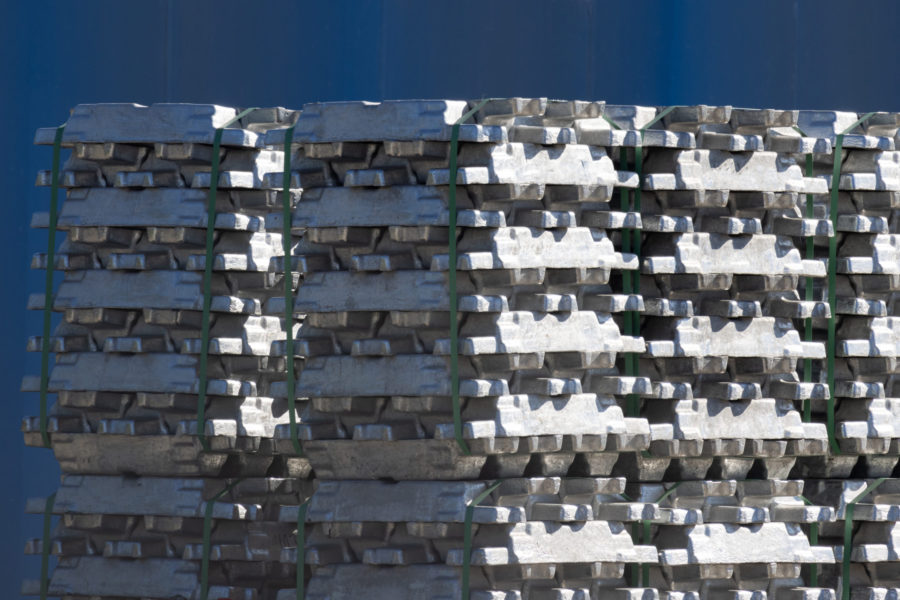Is the US hostage to China for the critical materials needed for EVs?

At this time, yes.
The twilight of domestic American process engineering is the major impediment to a secure domestic supply of critical minerals, refined metals, alloys, fine chemicals and the manufactured items dependent on them.
The Chinese economy is organized to maximize Chinese domestic security of supply of natural resources, their processing into industrially useful forms, and the production of end user consumer and military goods in order to assure and sustain the growth of the Chinese economy.
Chinese self-sufficiency in critical natural resources is defined as the combination of STEM educational resources and domestic and offshore production and ownership or control of all of natural resources required to meet that goal. China’s industrial policy is specifically designed to ensure this outcome. This policy has been at the core of China’s version of capitalism, i.e., a command economy with Chinese characteristics.
The electrification of urban and interurban transportation, which mandates the conversion of China’s internal transportation away from the use of fossil fuels to the use of batteries as the source of energy is just one part of China’s industrial policy, and its purpose is certainly not to save the planet. Its purpose is to reduce urban air pollution from the solid particulates and toxic and acid forming gases emitted by fossil fueled internal combustion engines.

With regard to the mandated domestic American sourcing of critical materials for battery powered electric vehicles, the Inflation Reduction Act (IRA) was clearly drawn in haste without appreciation of the domestic American barriers of politics, time, money and access to natural resources and the chemical and metallurgical processing necessary to comply with the IRA’s purely politically motivated strictures. The IRA is not the implementation nor the result of a coherent industrial policy.
Now that the American military and civilian sectors have had time to recognize the unintended consequences of the IRA’s purely political restrictions on the sources of raw materials and finished goods, both sectors of the economy have made their displeasure known to government bureaucrats and inability to comply with the contradictory (to political policy) outcomes dictated by the act. It is now the job of unelected bureaucrats to twist the words of the act so as to make it seem that it’s being obeyed, running in polar opposition to the act’s plain intentions.
General Milley, the Chairman of the Joint Chiefs of Staff, stated that China is not as big a threat, as was previously stated, last week. This is an example of the necessary walking back of the IRA to allow the U.S. Dept of Defense to continue sourcing its critical materials-based components, such as rare earth permanent magnets, from the People’s Republic of China (PRC) through transparent cut-outs, such as Japanese suppliers who source their rare earth raw materials and finished goods in China and make everything but the label (Made in Japan) in the PRC.
This situation is not just due to deposits of rare earths or other critical minerals being found and exploited in the PRC; it is more importantly due to the financialization of the American economy that has resulted in the downgrading of American engineering, STEM education, productivity, and innovation.
Engineers don’t need financial analysts to tell them if a technology works; they need to decide if a technology can be commercially deployed. Can technology be made profitable? Can it produce more revenue than costs to build and operate?
Geologists don’t need financial analysts to tell them where to look for mineral concentrations. Nor do mining and mineral processing engineers need financial analysts to tell them what works and what doesn’t in developing sources of minerals and the technologies to process them. Engineers are perfectly capable of determining if a deposit or a process is economical commercially. It is the academic research community that ignores commercial economics and ‘scale-up’ engineering realities. Most research and development money for mineral processing goes to academia and comes from the government.
America’s world class lead in science and technology began in World War II’s security-first, cost be damned, command economy. The consumer product vacuum of that war was soon filled with a whirlwind of new consumer technologically-based gadgets, such as transistor radios, tube television, electronic calculators, and the like.
The Cold War and moon programs gave added life to this economy, and the result was color television, integrated circuit-based consumer and medical electronics, and phenomenal advances in jet and rocket propulsion and medicine. The theoretical discovery followed by the practical production of rare earth permanent magnets began in this period which led to the miniaturization of electronics that fueled the consumer “tech” revolution of the 21st century.
The U.S. government support of basic research began to fade in the early 1970s when President Nixon cancelled the space shuttle program. The drive to innovate was replaced by the drive for profits and by financial manipulation, so that, for example, the mass production of rare earth minerals and magnets was moved from the USA to China, never to return by the end of the twentieth century.
The last burst of American innovation, Silicon Valley, was begun by engineers. Now those pioneers have been replaced by people who are increasingly oriented towards finance and media. More than 2/3 of the “engineers” who keep Silicon Valley alive today were born in other countries. STEM subjects are held in low regard in Washington’s “educational support” establishment.
The narrow-minded ignorance and greed of the American political and oligarchical classes in moving our engineering to China to sustain profits and sequester them narrowly among themselves has destroyed America’s status as the world’s premier manufacturing nation. More insidiously it has destroyed our general ability to comprehend and deploy process technology.
Financial analysis based on the economics and efficiency of process technology must first understand the technology. This does not seem possible either on Wall Street or in Washington, DC, both of which have become islands of self-regard.
How do we evaluate the probability that a junior (physical exploration or processing idea) mining/refining venture will succeed? The basic metric is the probability that the venture will be profitable, so that investors can sell their shares for more than their original purchase price.
Analysts at highly regarded investment advice groups are eagerly sought out by the juniors’ managements to “cover” their companies, i.e., to analyze them and recommend buying shares. But the “analyst” community in America and Europe is simply not up to the job.
Every time a university lab experiment produces a press release on an “innovative” or “disruptive technological advance” in battery technology or electric power distribution, for example, the experimental results (usually unconfirmed by third party reproduction) are touted by Wall Street “analysts” as “breakthroughs” and Wall Street uses this ignorant nonsense to pump some junior mining or processing stock’s price.
Technology is the engineering of science. In America, finance and politics determine whether or not a technology is deployed. In China, it is the contribution to the growth of the economy that determines whether or not a technology is deployed. The Chinese state’s support of basic science and technology is now where America was at the height of our Cold War/moon program era.
There can be no domestic American self-sufficiency or security of supply of raw materials and their processing without a dedicated program to understand the problem and a dedicated plan to solve it.
Can America regain its place in science and technology for the common good and defense?
Not with our current leadership.
Jack Lifton is Executive Chairman of the Critical Minerals Institute and a consultant and technical advisor to One World Lithium, which is developing an advanced direct lithium extraction process for the extraction and separation of lithium from natural brines, directly generating lithium carbonate. His company, Jack Lifton LLC advises governmental agencies, both at home and abroad, on metals industries supply chain issues and engages in extensive due diligence on mining, refining, and the fabrication of metals for financial institutions globally.
More News
{{ commodity.name }}
{{ post.title }}
{{ post.date }}



Comments